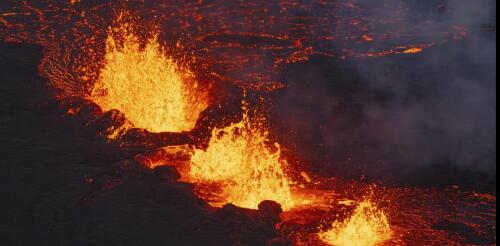Mid-ocean ridges
Lava erupted through a fissure in Iceland’s Reykjanes Peninsula on Dec. 18, 2023, shooting almost 100 feet (30 meters) in the air in its early hours. Icelanders had been anticipating an eruption in the area for weeks, ever since a swarm of thousands of small earthquakes began on Oct. 23 northeast of the fishing town of Grindavík, signaling volcanic activity below. In the days that followed those first rumblings, a series of small rifts opened under the town, breaking streets, rupturing utility lines and tilting houses. GPS stations detected the ground sinking and rising over a large area. Geologists from the Icelandic Met Office interpreted the events as evidence that a basalt dike – pressurized magma that forces its way into a fracture – had intruded under Grindavík. The activity there had tapered off by early December, but 2.5 miles (4 kilometers) north of town, the ground under the Svartsengi geothermal power plant was moving....
Thousands of earthquakes in recent weeks have shaken the Icelandic fishing town of Grindavík, about 30 miles (50 kilometers) southwest of the capital Reykjavik. They have triggered evacuations and warnings that a volcanic eruption may be imminent. While the idea of magma rising was no doubt scary for tourists visiting the nearby Blue Lagoon geothermal spa, which was closed as a precaution, Iceland’s residents have learned over centuries to live with their island’s overactive geology. So, why is Iceland so volcanically active? The answer has two parts: One has to do with what geologists unimaginatively call a hotspot, and the other involves giant tectonic plates that are pulling apart right beneath the island. As a geologist, I study both. Eruptions in this region of Iceland tend to flow rather than being explosive, as residents saw in July 2023 and in 2021-22. Kristinn Magnusson/AFP via Getty Images...

